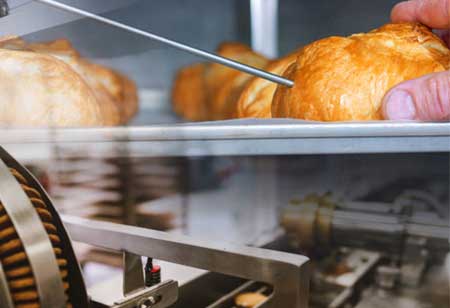THANK YOU FOR SUBSCRIBING
Be first to read the latest tech news, Industry Leader's Insights, and CIO interviews of medium and large enterprises exclusively from Food and Beverage Tech Review
The Need for Smart Yet Sustainable Approach in Packaging
Sustainability and smart technology, multifaceted, have become an essential part of packaging and sustainability professionals over the years.

By
Food and Beverages Tech Review | Thursday, September 08, 2022
Stay ahead of the industry with exclusive feature stories on the top companies, expert insights and the latest news delivered straight to your inbox. Subscribe today.
Although they are different sectors, sustainability and smart packaging are essential for the packaging industry. Therefore, businesses are combining these two fields to gain more effective advantages.
FREMONT, CA: Sustainability and smart technology, multifaceted, have become an essential part of packaging and sustainability professionals over the years. Sustainable packaging is an easier and more recyclable material made from renewable or compostable resources, using fewer resources and has recently included a reuse approach rather than recycling. Whereas smart packaging is defined into two classifications, such as active and intelligent or connected.
Earlier, smart packaging elements were considered non-environmental-friendly, such as conductive inks of copper and silver, metal RFID, and active coatings using chemicals consisting of antimicrobial properties, but this rendered them unrecyclable. Sustainable, on the other hand, focusing merely on packaging throughout its lifecycle and wasting food can have more impact on the environment than packaging. A plethora of smart packaging components can be utilised and recycled by extending the shelf-life or condition of a product, ultimately leading to its sustainability.
Check Out This : Environmental Business Review
The idea of what defines a sustainable and smart approach to a circular economy has advanced significantly, as have the technologies for both of these types of packaging. Therefore, the notion that reusing rather than recycling would be a better course of action has gained traction recently. This is because the issue surrounding recycling capacity is that it is uneconomical to recycle everything and has environmental effects. Findings have observed that some flexible plastics have less environmental impact with zero recycling than rigid plastics with greater recycling abilities.
Similarly, smart packaging has advanced to more eco-friendly products such as paper RFID tags, conductive inks made up of recyclable materials like graphene and active packaging elements extracted from natural sources such as plants, cellulose, durian skin or essential oils. Digital watermarks and codes enabling the identification and sorting of different plastics for more effective recycling are currently gaining popularity. However, the most significant impact that smart packaging could have on the sustainable sector is likely to come from its ability to inform.
Discussions are being conducted across the globe to explore sustainable transformations in packaging, which necessitates system-level change and a desire for every business to embrace new perceptions and technologies. Although the sustainable and smart packaging equation is a wider concept of debate, both have a definite role to play. As people demand to recycle their packaging and are confused as to how, where, and why, connected packaging narrates the need and story for these queries in an explicit and accessible way. Companies have already begun leveraging smart packaging technologies to achieve sustainability objectives.
I agree We use cookies on this website to enhance your user experience. By clicking any link on this page you are giving your consent for us to set cookies. More info







